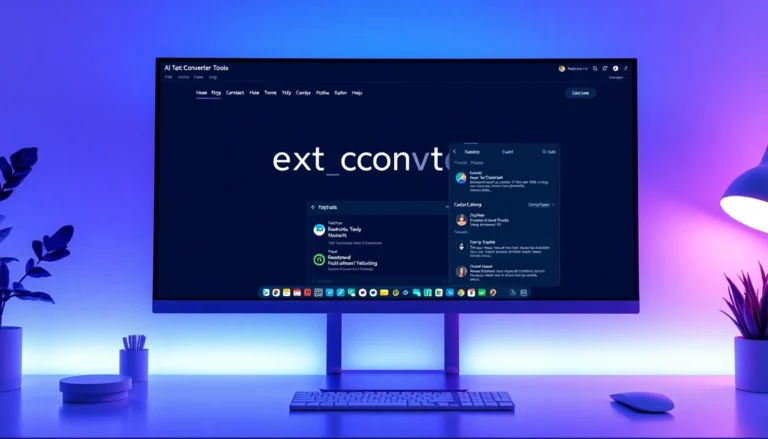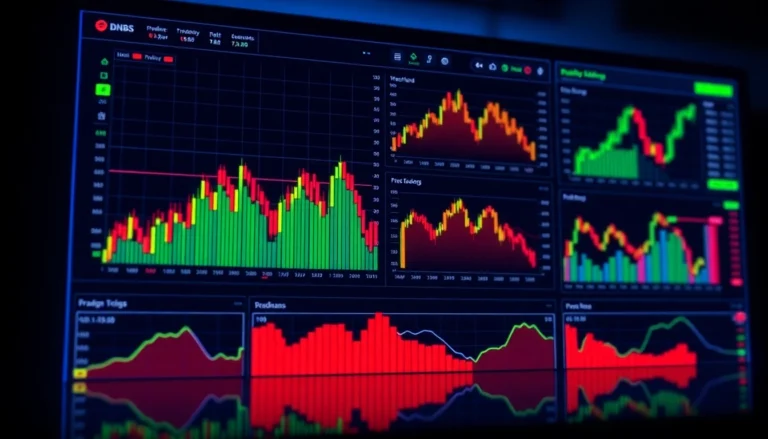
Understanding Container Rental: Types and Uses
In today’s dynamic business environment, efficient storage and transportation solutions are vital for numerous industries across the UK. Whether it’s construction, retail, manufacturing, or logistics, the need for reliable, flexible, and cost-effective storage options has fueled the growth of container rental services. With the versatility and durability of shipping and storage containers, companies can optimize their operations without the heavy upfront investment of purchasing equipment. If you’re considering container rental, understanding the different types, applications, and benefits is essential to making informed decisions that align with your operational needs. Explore the comprehensive landscape of container rental, from types and uses to strategic management, to harness this powerful resource effectively.
Different Types of Shipping and Storage Containers
Standard Shipping Containers
Standard shipping containers, often known as ISO (International Organization for Standardization) containers, are primarily designed for transporting goods across ships, trucks, and trains. These containers come in various lengths, with 20-ft and 40-ft being the most common, and have standardized dimensions that facilitate seamless integration into logistics networks. Made from high-grade steel, they provide excellent strength, weather resistance, and security. Many rental companies offer these containers for purposes beyond shipping, such as on-site storage or modular site offices.
Specialized Storage Containers
Beyond the standard models, specialized containers cater to unique operational requirements. These include:
- Refrigerated Containers (Reefer Containers): Equipped with temperature control systems, these are ideal for transporting perishable goods or maintaining climate-sensitive materials.
- Open-Top Containers: Designed without a roof, allowing for oversized cargo that can’t be loaded through standard doors, commonly used in construction or manufacturing sectors.
- Flat-Rack Containers: Featuring collapsible sides, these are suitable for heavy or bulky items needing easy loading from the top or sides.
- Tank Containers: For transporting liquids, chemicals, or gases safely within an enclosed, durable tank.
Storage Containers for Various Applications
Storage containers designed specifically for on-site use vary from small lockable units to large multi-functional modules. Common sizes include 10ft, 20ft, and 40ft. These are often used as temporary warehouses, secure storage units, or even converted into mobile offices and accommodation facilities. Rental providers offer both new and used containers, with the option for customization to meet specialized needs.
Common Applications in Business and Construction
Business Storage and Logistics
Retailers and manufacturers frequently use containers for storing inventory, equipment, and materials, especially in locations where permanent storage infrastructure isn’t feasible. Container rental allows businesses to scale storage solutions flexibly, responding to seasonal peaks or expanding operational zones. In logistics, containers facilitate seamless transit, ensuring goods are kept secure from collection to final delivery, streamlining supply chains.
Construction Site Use
Construction projects depend heavily on portable storage units for safeguarding tools, materials, and documentation. Site containers provide secure, weatherproof spaces close to project zones, reducing downtime caused by equipment theft or weather damage. Furthermore, these containers often serve as site offices, meeting rooms, or break areas, enhancing site management efficiency.
Industrial and Agricultural Sectors
Industrial facilities utilize large containers for storing raw materials or waste, while farms and agricultural businesses employ them for equipment storage, crop processing areas, or mobile processing units. The adaptability of container rental ensures these sectors can expand or reduce storage capacity as needed without long-term commitments.
Advantages of Renting Over Buying
The decision between renting and purchasing containers hinges on several factors, with renting offering numerous strategic advantages:
- Cost Efficiency: Renting eliminates the substantial upfront investment associated with purchasing. This is particularly advantageous for short-term projects or seasonal demand peaks.
- Flexibility and Scalability: Rental agreements can easily adapt to changing needs—adding or removing containers as your project scales up or down.
- Maintenance and Support: Rental providers often include maintenance, repairs, and security, reducing operational burdens and unexpected costs.
- Accessibility to Latest Models: Renting allows access to newer, upgraded container models with enhanced features such as better insulation, security, and customization options.
- Reduced Storage Footprint and Logistics Hassle: Container rental suppliers typically handle delivery, setup, and collection, streamlining logistics and saving time.
Conversely, ownership might be justified for businesses with persistent, long-term storage needs, where the amortization of equipment costs over years offsets higher initial expenditure. Nonetheless, for most temporary or fluctuating requirements, rental offers a flexible, practical solution.
How to Choose the Right Container Rental Provider
Key Factors to Consider: Size, Security, Flexibility
Selecting an appropriate provider requires careful consideration of several critical factors:
- Container Size and Dimensions: Determine your storage volume and spatial constraints. For example, small kiosks or equipment storage may only need a 10ft container, whereas large inventory might require a 40ft unit.
- Security Measures: Ensure containers are equipped with sturdy lock systems, security seals, and possibly alarm or surveillance options, especially if you’re storing valuable items.
- Flexibility and Customization: Assess whether the provider offers flexible rental terms, container modifications, or options for stacking and specialized features.
Evaluating Pricing and Rental Terms
Cost comparison should go beyond the stated rental rates. Examine:
- Delivery and pickup fees
- Duration-based discounts or premiums
- Additional charges for customization or security enhancements
- Terms for renewal, extension, or early termination
Transparent pricing and clear contractual conditions are essential to avoid unforeseen expenses.
Service Coverage and Delivery Options Across the UK
Examine whether the provider offers comprehensive coverage, including remote or rural locations. Delivery and collection logistics are crucial, especially for large or heavy containers, to minimize downtime and transportation costs. Leading providers typically offer nationwide service with flexible scheduling, ensuring your operations remain uninterrupted regardless of your location within the UK.
Best Practices for Container Rental Management
Assessing Your Storage Needs in Detail
Conduct a thorough analysis of your storage requirements: project duration, expected inventory volume, security needs, environmental factors, and future growth projections. Accurate assessment ensures you select the appropriate container type and size, preventing underutilization or the need for multiple short-term rentals.
Ensuring Proper Site Preparation and Placement
Adequate site planning is vital. The surface should be level, capable of supporting the weight of the container, and accessible for delivery vehicles. Proper foundations, such as gravel beds or concrete slabs, can prolong container lifespan and prevent shifting or tilting. Position containers to maximize security access and ease of loading/unloading.
Maintenance, Security, and Access Control
Regular inspections and maintenance are crucial, especially if containers are used long-term or for storing sensitive materials. Ensure locks and security measures are robust. Limit access through controlled keys or digital entry systems, and document usage logs. Good maintenance and security practices help in preventing theft, vandalism, and deterioration.
Cost Optimization and Budget Planning
Understanding Pricing Structures and Hidden Fees
Rental costs can vary considerably based on container type, size, rental duration, and regional location. Be wary of hidden fees—such as delivery charges, surcharges for oversized units, or administrative costs. Clarify these upfront to avoid budget overruns.
Planning for Long-term versus Short-term Rentals
Short-term rentals may incur higher daily rates but can be more flexible, while long-term agreements often come with discounted monthly rates. Calculate total cost over the intended period and compare options. Some providers also offer buy-out options if you expect to need the container long-term.
Maximizing Value with Additional Services and Customizations
Consider bundle packages including security upgrades, insulation, ventilation, or custom modifications. These enhancements improve functionality and reduce the need for future investments. Also, some providers offer maintenance packages or insurance, adding value and reducing operational risks.
Future Trends in Container Rental Industry
Innovation in Container Designs and Conversions
The industry is witnessing a shift towards modular, eco-friendly, and multifunctional container designs. Innovations include insulated containers for temperature-sensitive storage, container conversions into portable offices or hospitality units, and hybrid models incorporating solar panels or renewable energy systems.
Sustainable Practices and Eco-friendly Solutions
As environmental concerns intensify, rental companies are emphasizing sustainable practices—using recycled materials, enhancing energy efficiency, and offering containers designed for minimal environmental impact. Reuse and repurposing, along with eco-friendly logistics, are becoming industry standards.
Technological Integration for Better Tracking and Management
IoT (Internet of Things) integrations enable real-time tracking of container location, condition, and security. Mobile apps and digital platforms allow customers to monitor their rentals remotely, schedule pickups, or request customizations seamlessly. These technological advancements streamline operations and improve customer satisfaction.



